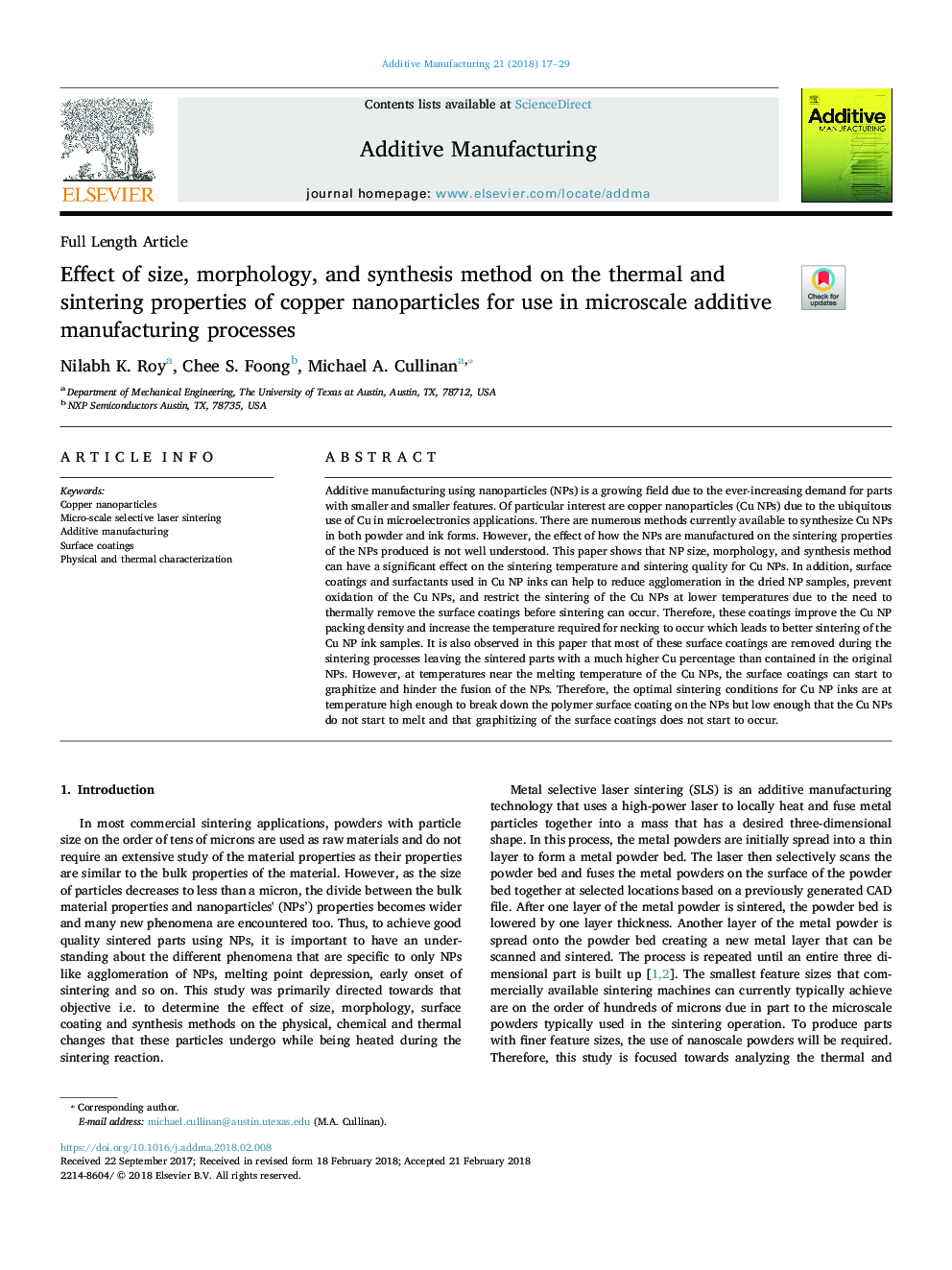| Article ID | Journal | Published Year | Pages | File Type |
|---|---|---|---|---|
| 7205840 | Additive Manufacturing | 2018 | 13 Pages |
Abstract
Additive manufacturing using nanoparticles (NPs) is a growing field due to the ever-increasing demand for parts with smaller and smaller features. Of particular interest are copper nanoparticles (Cu NPs) due to the ubiquitous use of Cu in microelectronics applications. There are numerous methods currently available to synthesize Cu NPs in both powder and ink forms. However, the effect of how the NPs are manufactured on the sintering properties of the NPs produced is not well understood. This paper shows that NP size, morphology, and synthesis method can have a significant effect on the sintering temperature and sintering quality for Cu NPs. In addition, surface coatings and surfactants used in Cu NP inks can help to reduce agglomeration in the dried NP samples, prevent oxidation of the Cu NPs, and restrict the sintering of the Cu NPs at lower temperatures due to the need to thermally remove the surface coatings before sintering can occur. Therefore, these coatings improve the Cu NP packing density and increase the temperature required for necking to occur which leads to better sintering of the Cu NP ink samples. It is also observed in this paper that most of these surface coatings are removed during the sintering processes leaving the sintered parts with a much higher Cu percentage than contained in the original NPs. However, at temperatures near the melting temperature of the Cu NPs, the surface coatings can start to graphitize and hinder the fusion of the NPs. Therefore, the optimal sintering conditions for Cu NP inks are at temperature high enough to break down the polymer surface coating on the NPs but low enough that the Cu NPs do not start to melt and that graphitizing of the surface coatings does not start to occur.
Related Topics
Physical Sciences and Engineering
Engineering
Industrial and Manufacturing Engineering
Authors
Nilabh K. Roy, Chee S. Foong, Michael A. Cullinan,
